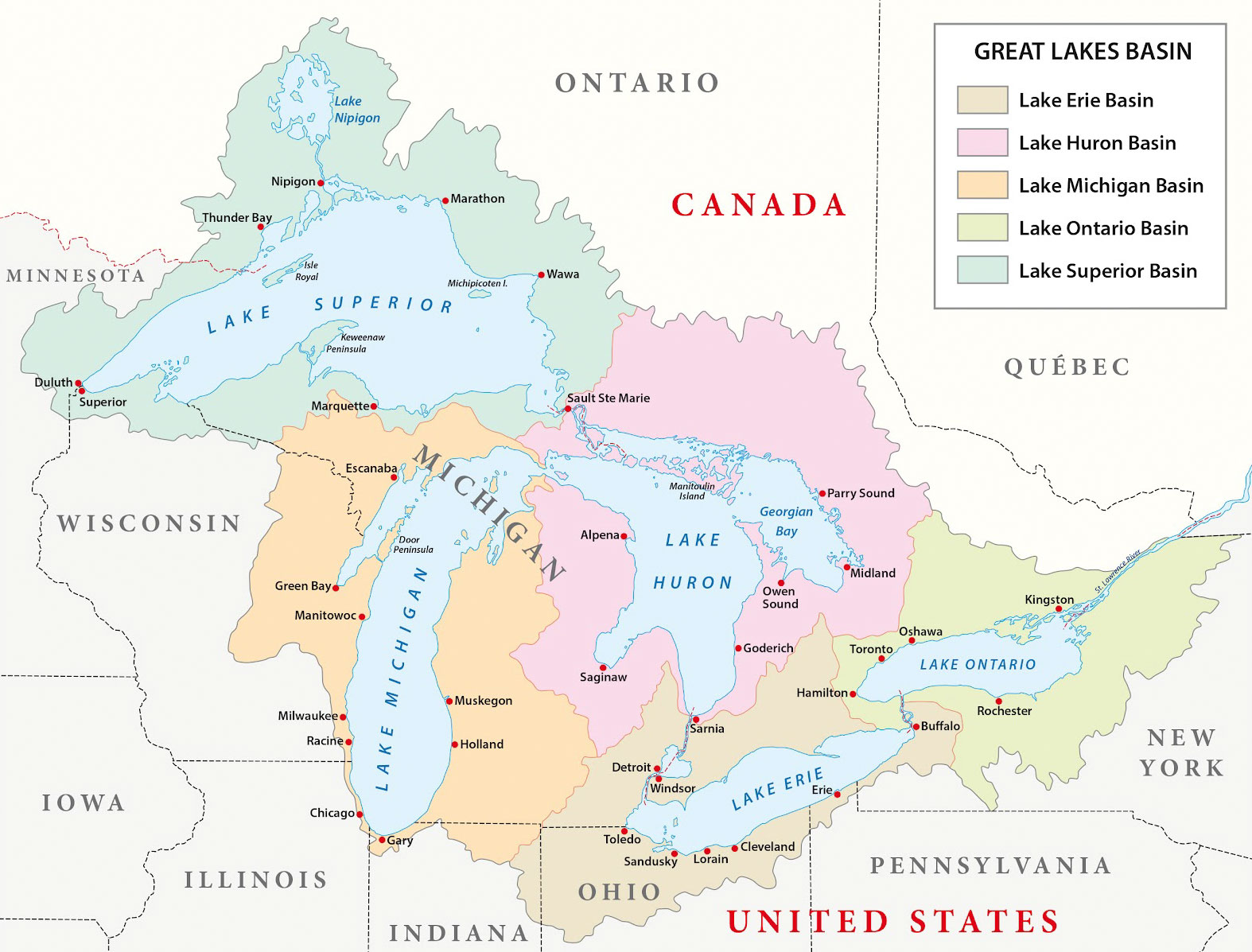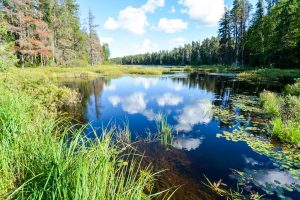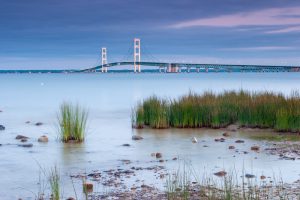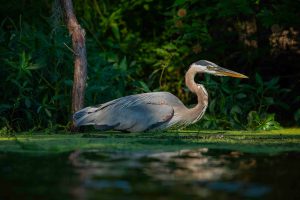About the Great Lakes Basin
The Great Lakes of North American are the largest contiguous body of fresh water on the planet – a dynamic ecosystem impacting eight U.S. states and two Canadian provinces comprised of 34 million people.

Key Fresh Water Source
The Great Lakes represent 95% of the United States’ surface freshwater and nearly 20% of the planet’s. If the Greenland, Arctic and Antarctic ice sheets were to melt into the oceans and the Great Lakes were to stay the same, the Great Lakes would then represent nearly 50% of the planet’s surface freshwater.
Economic Impact
Commercial, transportation and recreation use of the Great Lakes Basin generates 100’s of billions of dollars in revenue.
Environmental Importance
Upland from the Great Lakes are wetlands – one of the key elements for supplying clean water to the Great Lakes. In effect, wetlands are the origin of the Great Lakes, providing critical habitat for aquatic flora and fauna of the region, and purified water to the Great Lakes.



About The Great Lakes Restoration Initiative (GLRI)
After many years of degradation, and with strong encouragement by the Governors of the Great Lakes states, in 2010 President Obama and Congress made restoration of the Great Lakes a national priority. Led by the U.S. Environmental Protection Agency, for the past decade a consortium of 16 federal agencies have been collaboratively working together to develop plans and enable projects which are restoring the Great Lakes to their natural state.
Long Term Goals
Funding for the Great Lakes Restoration Initiative (GLRI) has been allocated to strategically work on eliminating the biggest threats and accelerate progress toward achieving eight long term goals:
- Ensure fish are safe to eat
- Make water safe for recreation
- Ensure drinking water taken from the lakes is safe to consume
- Achieve delisting for all Areas of Concern
- Eliminate harmful/nuisance algal blooms
- Control existing invasive species
- Prevent new self-sustaining invasive species
- Protect and restore native habitat to sustain native species
Focus Areas
Current project work on the Great Lakes is guided by GLRI Action Plan III which covers Fiscal Years 2020-2024. This plan focuses on five “Focus Areas”:
- Toxic Substances and Areas of Concern
- Habitats and Species
- Foundations for Future Restoration Actions
- Invasive Species
- Nonpoint Source Pollution Impacts on Nearshore Health
Header photo credit: The North American Great Lakes are featured in this true-color Moderate Resolution Imaging Spectroradiometer (MODIS) image from September 16, 2002. Bridging the boundary between Canada and the United States, these large freshwater lakes took on their current size and shape during the final advance-retreat cycle of the Pleistocene ice age. What the advancing glaciers carved out, melting glaciers filled in, leaving (left to right) Lake Superior, Michigan, Huron, Erie and Ontario. Jacques Descloitres, MODIS Rapid Response Team, NASA/GSFC, Published October 10, 2002, Data acquired September 16 – 16, 2002
